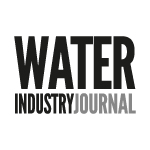By Richard Broome, Managing Director at LSBUD
Richard Broome, managing director at LSBUD, discusses the water industry’s contradictory approach to safety best practices, focusing on the contrast between protection of its workers and under-protection of its assets.
With stringent measures, protocols and policies in place to ensure the protection of on-site teams, there’s no doubting that the water industry is fully committed to worker safety on critical infrastructure projects.
Yet, water companies are falling drastically short when it comes to protecting their own vast network of underground infrastructure. This paradoxical thinking raises an important question: why do water companies prioritise the safety of their people but not their assets, especially when the consequences of damage can be so severe?
Divided approach to safety
Damaging even a single water pipe can have significant consequences. Yet, some water companies still seem reluctant to protect their own infrastructure through collaborative sharing of asset information. Just 20 percent of water companies are registered to our central portal. With the industry having over 400,000 kilometres of underground pipes across the UK, that leaves up to 350,000 kilometres of water pipelines across the UK unprotected.
The disparity with other industries is vast. 90 percent of electricity networks and 100 percent of major gas DNOs are already registered through the portal. This highlights the stark difference in the proactive defence against accidental damage by industry.
Water companies that have already registered their assets include Portsmouth Water, South Staffs Water, Sutton and East Surrey Water and Cambridge Water. People looking to dig safely in the areas covered by these companies now have instant access to gas, electricity, and water plans at the same time. As a result, damage incidents are falling.
However, the hesitation from the remaining 80 percent creates a confusing narrative.
The consequences of hesitation
One of the most significant consequences of this hesitation to share asset information is the risk posed by third-party strikes.
Third-party strikes to water pipelines can cause severe disruptions to water services that cripple businesses, leave homes without clean running water, and even impact critical services like hospitals. Such damage can also inflict severe financial, reputational, and environmental consequences. For example, damaged pipes can allow contaminants into the water supply, creating potential health risks for entire communities.
Despite these disruptive consequences, water companies are still slow to join a central system.
Cultural disconnect
One reason for this discrepancy is rooted in the industry’s culture. Water pipelines are typically located deeper underground than other utilities. A poorly prepared or executed excavation is more likely to strike broadband, gas, or electricity assets first. However, as they are less likely to be the first asset hit during an excavation, it creates a false sense of security for water companies. This belief, though understandable, ignores the potentially severe consequences of a pipeline strike and is too simplistic as there are usually many more strikes than most would think.
Data security
Further complicating the issue is the water industry’s concern over data security, with reservations surrounding data access and privacy. Some companies fear that sharing their underground asset data could expose vulnerabilities or pose privacy risks. However, modern safe digging portals ensure asset owners retain full control over who can access their data, addressing these concerns while protecting critical infrastructure.
Commercial interests
Water companies are often commercially driven when it comes to their asset plans, with established commercial arms that sell this data alongside other land and property searches. While perfectly legitimate, this practice can inadvertently discourage third parties from accessing information, increasing risk to those very assets, and of course those doing the digging. Allowing an asset owner to choose who to charge, separating those who are looking to work safely from those who wish to sell the plans on as part of a wider service, is fundamental to a balanced approach.
Even though water companies understand the implications of not protecting their pipes, it is still commonplace across the majority of the industry. Although Ofwat has increased pressure in recent years with the introduction of its PR19 regulations, it has not had the impact anticipated.
Need for collaboration
To improve the current state of safety, collaboration must be prioritised. Water companies must be transparent and open with their communication as asset owners. This includes sharing data as it protects the physical pipes by improving project planning and pre-excavation awareness. By joining a central system, asset owners benefit from the ‘safety of the herd’ effect.
For example, an important part of Portsmouth Water’s day-to-day operations includes protecting its pipelines from accidental damage. Before working with us, the team had only been able to respond to asset location enquiries manually, which took a lot of time and resources. Portsmouth Water wanted to upgrade to an online solution that would provide third parties with a rapid, hassle-free way of getting the necessary information.
Since implementing our service in April 2020, Portsmouth Water has seen the visibility of its network improve 12-fold. Within a year of implementation, they had responded to over 30,000 third party asset mapping requests. These came from a range of sources, including fellow utility companies, developers and local authorities. Pre-LSBUD, Portsmouth Water averaged just 2,500 search enquires per annum.
In addition to improved search numbers, Portsmouth Water has been able to slash its average response time from up to ten days, to now just under one minute. The move has also helped the water company to reduce damages caused by third parties by 25%, stay at the forefront of leakage performance, and meet its PR19 requirements.
Conclusion
While commitment to on-site safety is highly commendable, it can’t come at the expense of protecting critical infrastructure.
As the AMP8 period approaches, water companies face growing pressure to balance safety and cost. By addressing the contradictions in their approach and embracing more collaborative, transparent practices, the water sector can ensure that both people and pipelines remain protected, futureproofing the industry.




